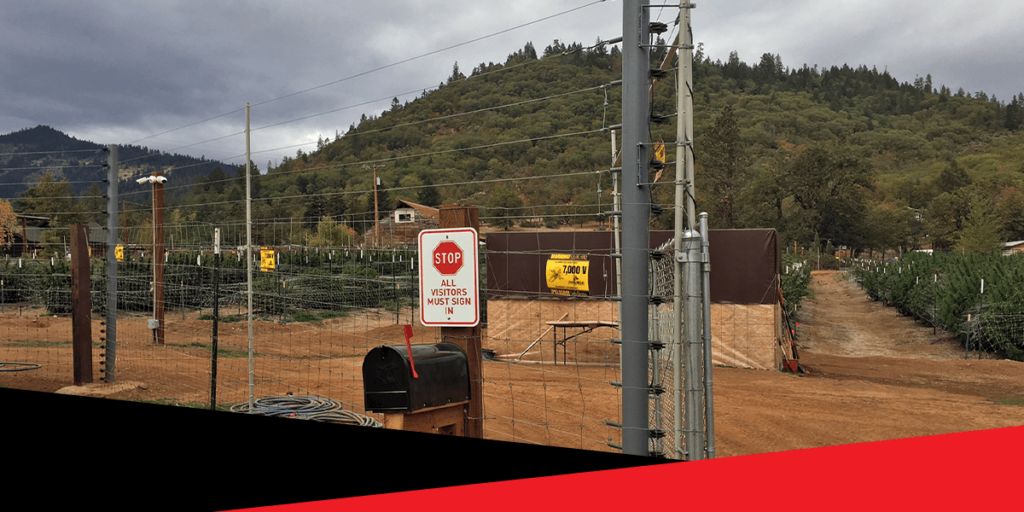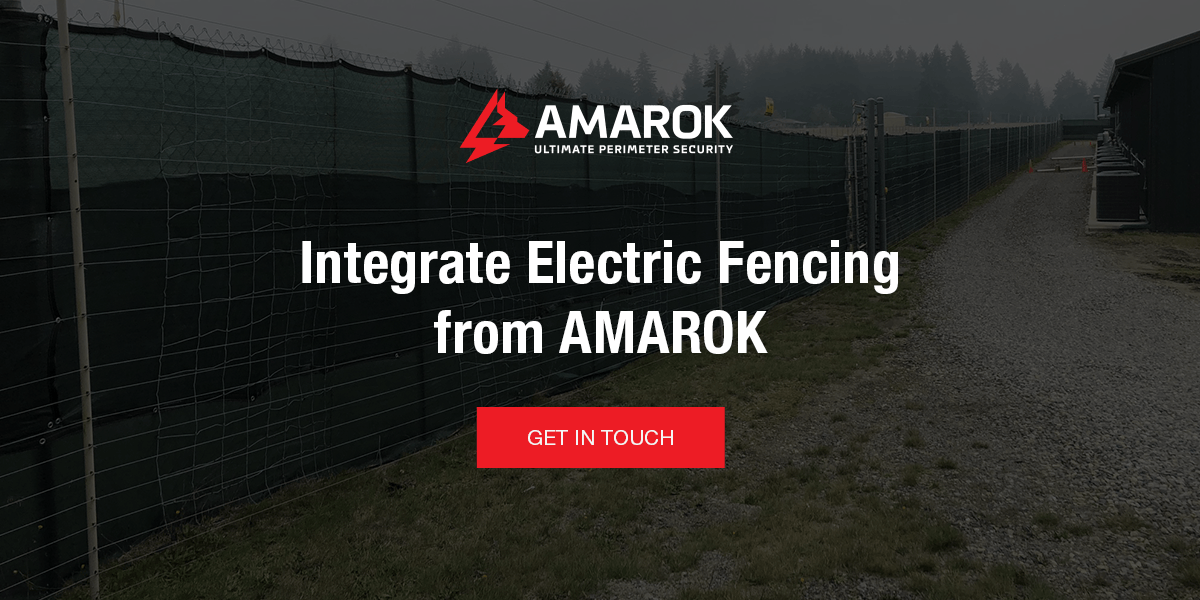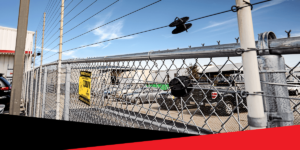More people around the world are using cannabis products for medicinal and recreational purposes. In the U.S., the cannabis market is expanding quickly due to many states legalizing cannabis. Both established companies and new businesses are investing in the market as a result.
Due to the nature of the industry and the high value of the products, cannabis cultivation facilities face a variety of security challenges. These sites are especially attractive targets for thieves. In some areas, cannabis cultivation may face pushback from local groups, leading to potential threats from those opposed to its use. This is why it’s necessary for site managers to create a cultivation security plan in order to address these challenges.
A proactive, robust cultivation security plan is a strategy designed to protect cannabis growing operations from theft, vandalism, and other risks. Follow these steps to create a secure environment and protect your business’s plants, investments, and assets.
1. Assess Security Risks
The first step to creating a cannabis security plan is to assess the potential threats and vulnerabilities at your cultivation site. This involves identifying security risks, evaluating their impact, and determining the best ways to mitigate them.
Cannabis cultivation sites are particularly vulnerable to security issues and crime due to a combination of factors, including:
- High value of products: The value of cannabis plants makes cultivation sites attractive targets for thieves looking to steal high-value assets.
- Remote locations: Many cannabis cultivation sites are located in remote or rural areas, making them less visible and accessible to law enforcement. This isolation can lead to longer response times in the event of an incident.
- Inadequate physical security: Poorly secured fences, gates, and entry points can allow easy access for intruders. Lack of proper lighting and limited or poorly positioned security cameras can leave blind spots for potential intruders.
- Lack of employee screening: Employees may exploit weak hiring practices and sabotage the site from within. Without thorough background checks and screening, the risk of internal theft increases.
- Environmental vulnerabilities: Cultivation sites may be susceptible to floods, wildfires, or severe weather, which can compromise security systems and damage facilities.
- Community relations: Failing to build positive relationships with neighbors and local law enforcement can create distrust, increasing the risk of security incidents.
To mitigate these vulnerabilities, it’s important to conduct a thorough risk assessment:
- Establish your assets: Identify and document all valuable assets, including plants, equipment, facilities, data, and personnel. Determine the importance of each asset to the operation, considering both financial and operational significance.
- Identify potential threats: Involve key stakeholders to brainstorm potential threats, such as theft, vandalism, natural disasters, and internal risks. You can also analyze past incidents and security breaches at your facility and similar sites to identify recurring threats.
- Locate vulnerabilities: Evaluate physical and operational security measures to identify weaknesses.
- Evaluate the likelihood: For each identified threat, assess the likelihood of occurrence on a scale from low to high.
- Assess the impact: Determine the potential impact of each threat on assets, operations, and overall business continuity. Consider factors such as financial loss, reputational damage, and legal consequences.

Consider Cannabis Security Compliance
Regulations surrounding cannabis cultivation security ensure the safe production, handling, and distribution of cannabis products. Cannabis cultivation security regulations vary significantly by state and region, but generally include the following components:
- Licensing and permitting: Most jurisdictions require cannabis cultivators to obtain licenses before they can legally grow cannabis. The application process often includes a security plan that outlines how the operation will manage security risks. You need to renew your license periodically, which involves demonstrating ongoing compliance with security regulations.
- Physical security: Many regulations mandate using physical barriers, even down to the specific type and height. Cultivators must also implement access control measures to prevent unauthorized entry.
- Surveillance and alarms: Laws in some states — like Mississippi — require cultivation sites to install 24/7 video surveillance and alarm systems that monitor key areas. You should be able to monitor the footage in real-time both on-site and off-site. Your premises must also have adequate lighting.
- Documentation and reporting: It’s important to maintain detailed records of security measures, employee training, and all incidents.
- Insurance: Some insurers impose restrictions on coverage or will only cover losses up to certain “sublimits.” This depends on the quantity of assets, the location of the site, and any relevant losses that the business may have sustained due to theft.
Because cannabis cultivation security regulations differ from one jurisdiction to another, cultivators must stay informed about state and local laws. This is particularly the case as public perception and legal frameworks surrounding cannabis continue to evolve.
When a cannabis cultivation site experiences regular instances of crime, there can be several consequences:
- Potential license suspension: If a cultivation site is found to be inadequate in its security measures or unable to prevent crime, growers may have their licenses suspended or revoked. Repeated security breaches may also be classified as non-compliance with state regulations, which could lead to fines or penalties.
- Increased security requirements: Regulators may ask for additional security measures to prevent future incidents. These may include upgrading surveillance systems, increasing perimeter security, or adding more personnel.
- Impact on business operations: Crime incidents can disrupt day-to-day operations with loss of product, damage to facilities, and decreased employee morale.
- Insurance implications: Frequent crime can lead to increased insurance premiums or the inability to secure coverage if your site is classified as high-risk.
- Increased costs: The need for enhanced security measures, legal fees, and potential fines can strain financial resources, impacting profitability.
3. Develop a Comprehensive, Layered Security Plan
With a list of your assets, security risks, and regulatory obligations in hand, you can establish clear security measures. Define what the security plan aims to achieve and create specific, measurable objectives to track your implementation progress.

Your cannabis cultivation security plan should contain at least the following components to deter intruders.
Physical Security Measures
Physical security measures provide the first barrier in a multilayer security approach. Examples of physical security include:
- Fencing: Install a tall fence around the entire property. Chain-link, barbed wire, or electric fencing are great deterrents.
- Gates: Add secure gates that only allow authorized personnel to enter. These gates should be locked after hours.
- Lighting: Ensure adequate lighting to deter intruders and provide improved visibility. Install bright, motion-activated lights around the perimeter and key areas of the facility.
- Security walls: Construct solid walls around sensitive areas, like processing rooms or storage facilities, to provide an additional layer of security.
- Locked storage areas: Use locked storage for valuable items and implement a sign-in/sign-out procedure for access to these areas.
Access Control
Restricted access and identification protocols will limit the number of unauthorized entries into and around your facility. Here’s how to implement various access control systems:
- Entry points: Limit the number of entry points to the cultivation site. Each entry point should have proper security measures in place.
- ID badges: Issue ID badges to employees and require visitors to sign in and out. This strategy helps track who is on-site at all times.
- Keycard access: Implement electronic keycard systems for access to sensitive or restricted areas, ensuring easy tracking and revocation of access. Clearly mark these areas as off-limits to unauthorized personnel.
Video Surveillance Systems
Industrial video monitoring systems are effective add-ons to physical security measures with access control. These examples will further deter crime and unauthorized entry:
- CCTV cameras: Install high-resolution CCTV cameras at strategic locations, including entrances, exits, and growing areas. Cover all critical points to minimize any blind spots.
- Remote monitoring: These systems allow for remote viewing of camera feeds via your smartphone or computer for real-time monitoring.
- Alarm systems: Set up alarm systems that trigger alerts in case of unauthorized restricted area access or breaches in your perimeter security.
4. Leverage Integrated Technology for Enhanced Security
When integrating additional security systems, it’s important to take a layered approach. Multiple layers of security ensure comprehensive protection and monitoring. The benefits of this approach for cannabis cultivation facilities include:
- Comprehensive monitoring: Integrated systems allow for centralized monitoring of all security components from a single platform. This simplifies oversight and management of your entire security system.
- Improved response times: In the event of an incident, you can quickly access relevant footage to assess the situation and provide law enforcement with critical information.
- Streamlined operations: Integrated technology reduces the need for multiple standalone security devices, which streamlines operations and minimizes maintenance efforts.
- Scalability and flexibility: New security systems can easily scale to accommodate the growth of your cultivation facility. As new technologies emerge, integrated systems can often incorporate these advancements without needing a complete overhaul.
- Enhanced employee safety: An integrated security system helps create a safer environment for employees by deterring potential threats and ensuring rapid response to incidents.
Examples of systems that can enhance your perimeter security include:
- Remote and mobile video monitoring system: These systems are designed to prevent theft and capture video evidence. They provide real-time protection with 24/7 surveillance and are the ideal add-on for perimeter security measures. Access live camera feeds from any device, ensuring comprehensive oversight of single or multiple locations from a unified dashboard.
- Sentinels: The AMAROK Sentinel is an enhanced security alert system. Sentinels are equipped with bright lights that scare away thieves, along with a red-and-blue flashing LED light bar that grabs attention. Sentinels are beneficial in vulnerable areas such as fencing corners and gates.

5. Implement a Security Operations Plan
Your security operations plan is essential for ensuring your facility stays safe and protected. Follow this guide to implement yours:
- Create detailed procedures: Outline specific operating procedures for various security aspects, including access control, video surveillance monitoring, emergency response, and incident reporting.
- Assign responsibilities: Clearly define roles and responsibilities for all personnel involved in security operations.
- Establish communication protocols: Develop protocols for internal communication during security incidents. Decide how information will be shared among team members and with law enforcement.
- Conduct security training programs: Train all employees on the security operations plan. Cover topics like identifying suspicious behavior, emergency procedures, and the use of security technologies.
- Schedule regular drills: Practice emergency response procedures and ensure all personnel are familiar with their roles during a security incident.
- Foster a culture of security: Encourage a culture of security awareness throughout your facility where all employees feel responsible for maintaining a safe environment.
- Establish monitoring protocols: Set up procedures for continuous monitoring of security systems, including surveillance cameras and alarm systems. Designate personnel responsible for monitoring and responding to alerts.
- Create incident reporting mechanisms: Develop a clear process for reporting security incidents, including how to document and escalate issues to management or law enforcement.
- Build relationships with local authorities: Establish connections with local law enforcement to facilitate quicker responses during incidents and gain support for security initiatives.
- Consult with security professionals: Hire security consultants or engage with law enforcement to gain insights into best practices and recommendations for enhancing security measures. Have audits conducted to ensure compliance with the security plan and identify areas for improvement.
- Update the plan as needed: Regularly review and update your security plan to adapt to new threats or changes in regulations.
Integrate Electric Fencing from AMAROK
A robust cannabis cultivation security plan will help keep your facility safe and secure. As a result, you can focus on growing your business. A well-structured security plan includes different safety protocols and technologies to limit who can enter the cultivation area. Perimeter security contributes to these protocols by ensuring only authorized personnel can gain access.
The Electric Guard Dog™ Fence stops theft before it happens by delivering a safe but memorable shock to would-be intruders. Establishing strong perimeter security protects your facility and employees while serving as a deterrent to potential criminals. We offer other add-on features that bring increased security to even the darkest, most remote corners of your property.
Take proactive steps in developing your security plan. Get in touch with AMAROK to request a threat assessment. You can also give us a call at (803) 786-6333.





